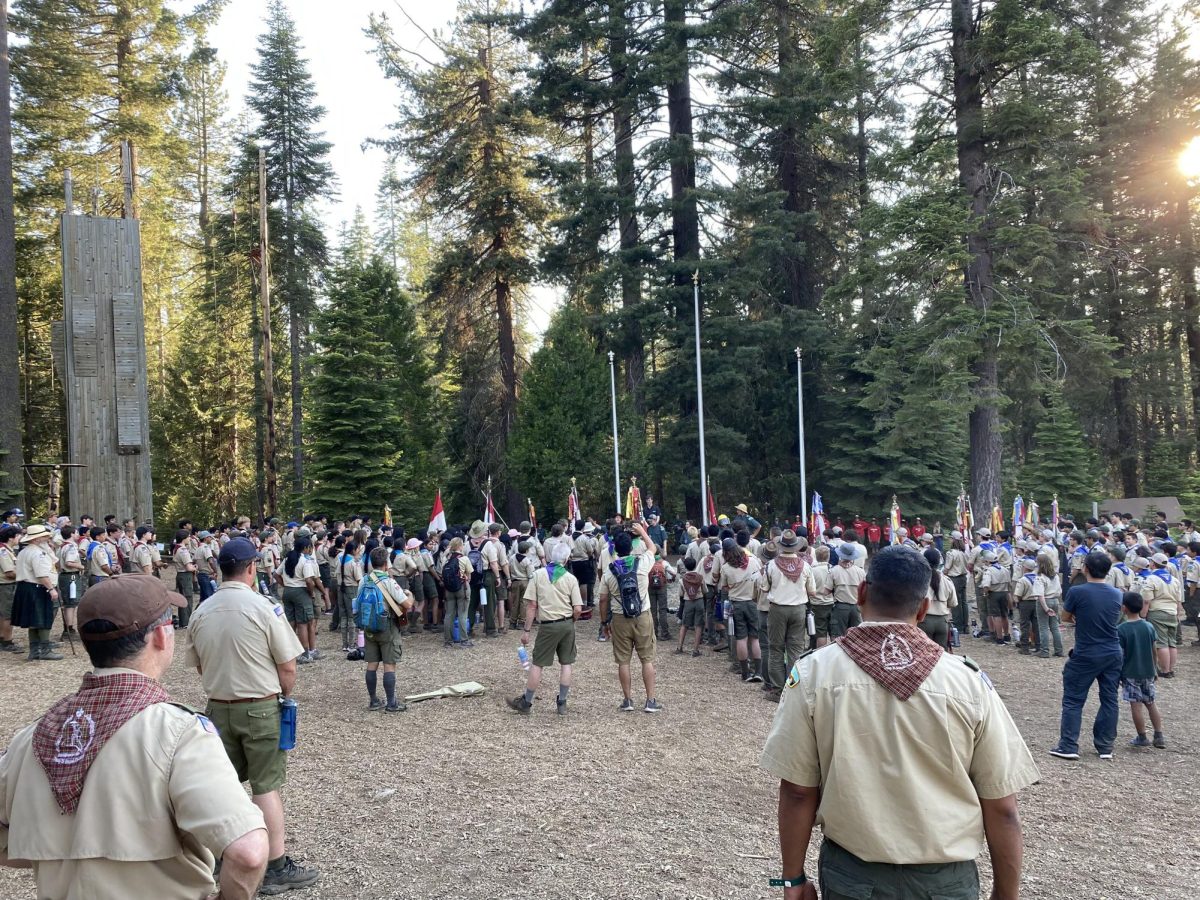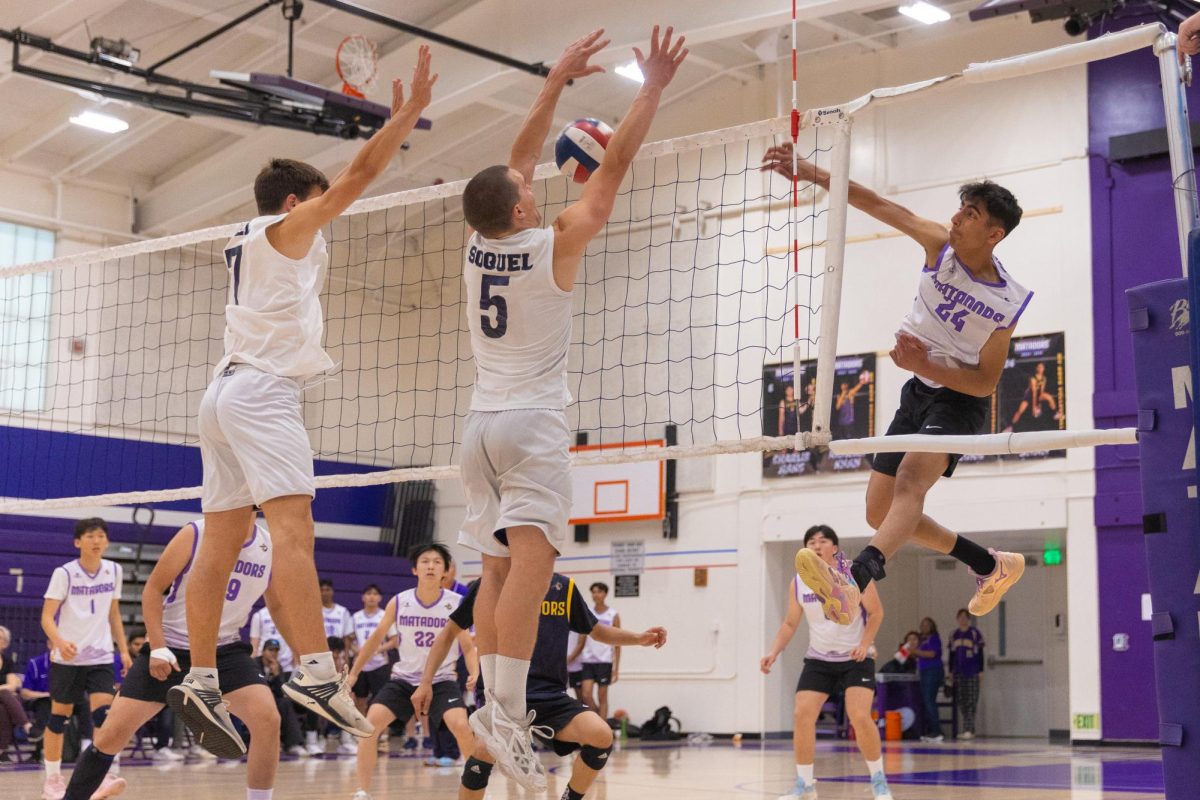Freshman and Tenderfoot Radhika Dharmapurikar initially joined Boy Scouts of America (BSA) during eighth grade after constantly hearing her friends discuss the camping, community and friendships that were all essential to scouting. Dharmapurikar did not enjoy camping before she joined, but she was drawn to the community side of scouts as opposed to the campouts. As a Tenderfoot, Dharmapurikar still has to climb five more ranks to become the highest rank, Eagle scout, which she hopes to achieve before the cutoff age of 18.
Becoming an Eagle scout requires patience and commitment, as prospective scouts will start off with no rank and work their way up through seven ranks. The ranks, in order of progression, are Scout, Tenderfoot, Second Class, First Class, Star, Life and Eagle scout. According to senior and Eagle scout Moulik Lohmor, becoming an Eagle scout requires the most dedication as prospective Eagle scouts must complete a community service project and a final board review, on top of meeting all other requirements for eligibility.
Lohmor had initially joined due to his affinity for camping, as his father would often take him out on weekends with his family. Becoming a scout allowed Lohmor to embark on more campouts, where he was able to participate in a variety of activities, ranging from going on hikes to playing soccer with his troop.
Similar to Lohmor, sophomore and Life scout Pranay Subramaniam joined scouts due to his interest in camping, as well as the opportunity to improve his public speaking. According to Subramaniam, scouts allowed him to go camping more frequently than before instead of having nothing to do while spending time at home. Subramaniam notes that he goes on several campouts per month, and he has become more active as a result of the numerous hikes.
“Because you’re outside and you don’t have access to technology, it’s a good getaway,” Subramaniam said. “We backpack through San Francisco and then backpack up Angel Island. It’s just a nice treat.”
Junior and Life scout Shashi Bhagwat, who has also attended the Angel Island backpacking trip, agrees that it is one of the most memorable trips from his scouting experience. He initially joined scouts because his father believed it would teach him good values, but later on grew to like the camping aspect of scouting. Dharmapurikar also mentions the campouts as her favorite aspect of scouting. Since Dharmapurikar goes on a campout every month, she is able to spend more time with her troop, as well as participate in a variety of outdoor activities. Dharmapurikar notes that her first summer camp, Camp Waunakee, in July 2023, allowed her to experience new opportunities that she never would have otherwise experienced. However, on Dharmapurikar’s first campout, she was underprepared due to her lack of experience.
“The first time I went camping, it was a disaster since it was my first campout,” Dharmapurikar said. “I under-packed, I was freezing and I was on my period. I still look at that experience with fondness because now I know better. Before that, I never used to go camping, maybe I would go once or twice with family, but now I go so often.”
Lohmor, Dharmapurikar and Subramaniam all attribute becoming more active to scouting, and Dharmapurikar emphasizes the physical aspect of being a scout, specifically citing Camp Philmont, in New Mexico, where there is a weight requirement and all attendees must be able to backpack 25 to 35% of your own body weight.
“It takes a lot of strength, I feel like anyone can just sign off requirements and stuff to go camping,” Dharmapurikar said. “But if you want to jump over the hurdles, you need to be able to have that strength.”
According to Dharmapurikar, her friends, in preparation for Camp Philmont, had to go on practice hikes every single week while carrying over 100 pounds on their backs. They would increase the weight each hike and have pack checks. It was a risk because if scouts slipped up even a little, it could be fatal, as the weight was so high. Dharmapurikar plans on participating in Camp Philmont once she meets the weight limit as a potential final venture.
In addition to campouts, scouts must complete merit badges. To become an Eagle scout, there are certain required merit badges that scouts must complete. Dharmapurikar completed the Personal Fitness merit badge, which is Eagle-required. Though it was a challenge for Dharmapurikar, she believes that this helped her be more active each day and improve her physicality. According to BSA, scouts must have knowledge of the benefits of fitness and create and execute a 12-week physical fitness program to earn this merit badge.
Subramaniam completed the climbing badge, despite not being an Eagle-required badge, as he had an interest in rock climbing. Though the badge is usually done through climbing in a gym, he was able to complete it at a summer camp on a mountain and was able to enjoy the scenery there. Lohmor was also able to go white-water rafting as a scout four years ago in Sacramento, which he still remembers to this day as his favorite campout. Based on his experience, he believes that everyone can benefit from joining Scouts BSA.
“We went to this place in Sacramento and we did whitewater rafting for a couple of hours there,” Lohmor said. “It was just fun, being on the river and some of the rapids were really strenuous. Even if you don’t start with any physicality, you will gain some by the end of your scouting experience.”
Though Dharmapurikar has enjoyed her experience as a scout, she notes the gender discrepancy since Scouts BSA, originally Boy Scouts, were targeted towards boys. She chose to join Scouts BSA as opposed to Girl Scouts as most of her friends had previously joined Scouts BSA. Dharmapurikar is part of Troop 2466, which is the sister troop to Troop 466 which is composed of boys. Dharmapurikar observed that she had to be able to stand up for herself and speak out, especially in this environment. She attributes this uneven participation to how being a scout was originally promoted with the image of physicality and how it was more marketed toward boys.
“When it first started, it was only supposed to be guys; you would not see any girl,” Dharmapurikar said. “Our troop only recently started their girls program four years ago, so it’s very new. We’re still growing and I think since it’s been advertised as Boy Scouts of America, all the guys are like ‘Oh it’s like outdoors in nature and it’s for me.’”
Bhagwat echoes Dharmapurikar, as he is not aware of how the girl troops operate in comparison. He reflects on the change of the name of the scouting program from “Boy Scouts” to “Scouts BSA” as an effort to become more inclusive as well, but has not noticed much change.
“I thought the whole point was to make it so that girls could be in Boy Scouts, but then they didn’t do that,” Bhagwat said. “The troops are completely separated. So I don’t know if they do similar things, I don’t even know any of that. I don’t think they achieved their goal.”
However, Dharmapurikar is thankful for the physical aspect of being a scout since it motivated her to go on more hikes and be more active, as well as spend more time with her father.
“I try to go on more hikes with my dad,” Dharmapurikar said. “While the motivation to do it is to get requirements done, sometimes I’m not even thinking about that. And I’m just like, ‘I just want to go on a hike for fun.’”










